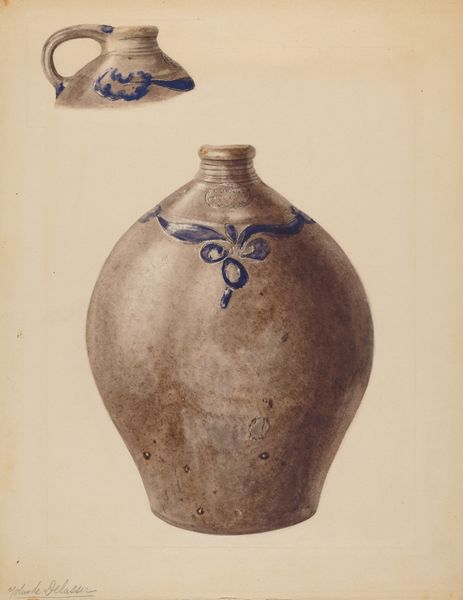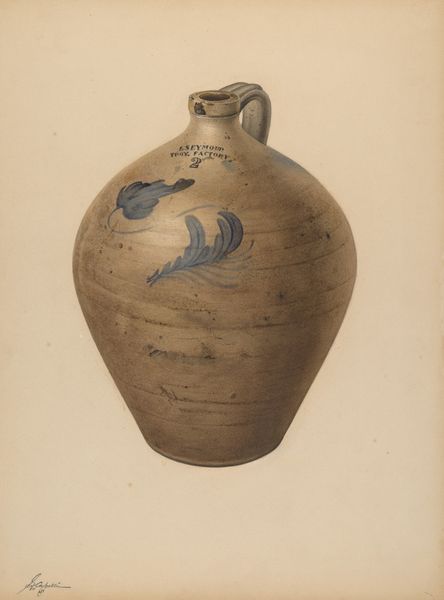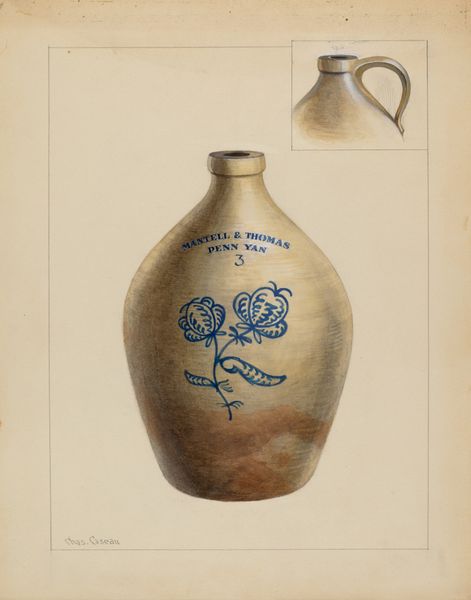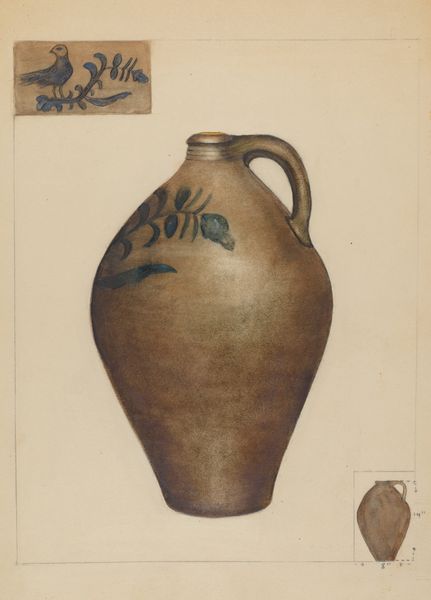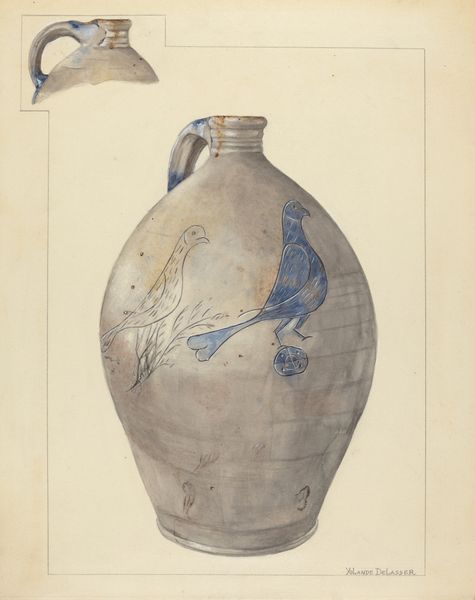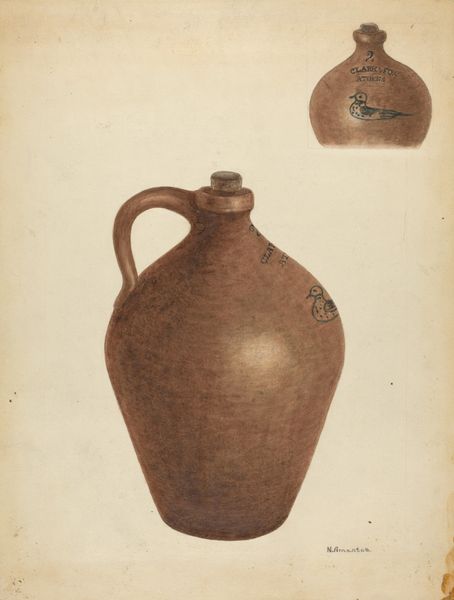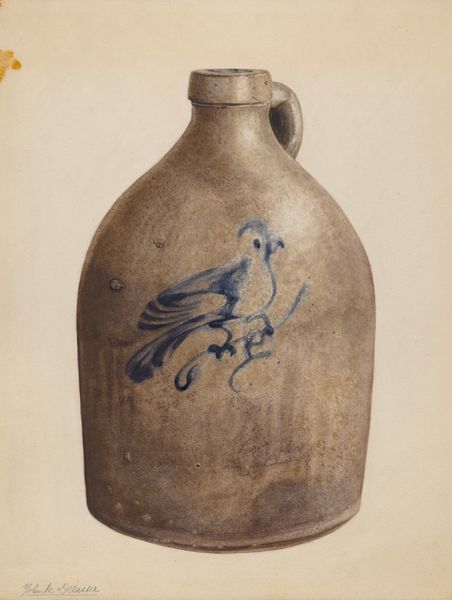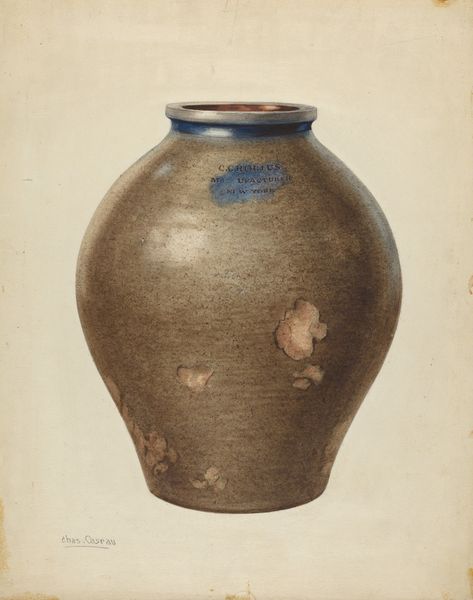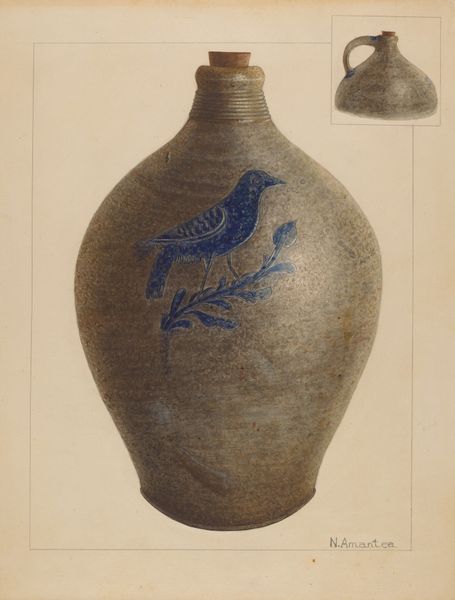
drawing, watercolor
#
drawing
#
water colours
#
oil painting
#
watercolor
#
coffee painting
#
watercolor
Dimensions: overall: 29.2 x 22.9 cm (11 1/2 x 9 in.) Original IAD Object: 11" High 6 1/4" Dia(base)
Copyright: National Gallery of Art: CC0 1.0
Editor: Here we have Yolande Delasser’s "Jug," likely from around 1937. It’s rendered in watercolor, with what appear to be detailed sketches, and a second jug in the corner as if showing a prior sketch. It makes me wonder if these types of drawings were made for product design and commercial purposes, like catalog pages? What jumps out at you? Curator: Well, considering this piece through a materialist lens, I immediately think about the context of artistic production. Who was Yolande Delasser and what social forces led to the making of "Jug"? Notice how the artwork portrays what appears to be utilitarian object decorated with images found in nature; what does the convergence of craft, nature, and everyday life suggest about the status of the object? Editor: That's fascinating. I was so focused on the drawing itself, but it does make me wonder about how the jug, a very practical item, gains new meaning through artistic representation. I'm used to seeing drawing as art, divorced from function... Curator: Exactly. How does depicting this everyday item impact notions about art's purpose and the artistic value found in mundane, working-class items? Perhaps watercolor served to ennoble the depiction. Also, the image depicts at least two separate views of the same jug, calling attention to how Delasser considered it from multiple perspectives. Editor: So, you're suggesting the value lies not just in the art itself, but also in elevating a commonplace object and its use? Highlighting process makes it easier to read? Curator: Precisely. Consider how Delasser employs traditional artistic materials, such as watercolor, to record an example of mass-produced craft; it pushes us to reconsider these traditional boundaries, forcing us to consider how social and economic factors played a role in its conception and its execution. Editor: This has totally changed how I see this simple "Jug." Thanks! Curator: Indeed! Reflecting on the labor, material, and class makes us question traditional aesthetic valuations.
Comments
No comments
Be the first to comment and join the conversation on the ultimate creative platform.
